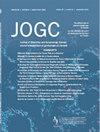脊髓损伤患者在出生时被指定为女性的情况下使用的避孕方法。
IF 2
Q2 OBSTETRICS & GYNECOLOGY
引用次数: 0
摘要
目标:有关脊髓损伤(SCI)患者在出生时被指定为女性的避孕数据非常有限。脊髓损伤患者怀孕在医学上可能很复杂,因此必须采取避孕措施以防止意外怀孕。本研究旨在评估医疗保健提供者(HCPs)向脊髓损伤患者提供避孕药具的情况以及所使用的避孕方法。共收到来自 33 个不同国家参与者的 780 份回复。大多数参与者居住在北美,自我认同为白人。大多数 SCI 发生在颈椎和胸部,以及 ASIA-A 和 ASIA-B。研究使用了描述性统计和卡方统计。结果:招募率为 85.4%,完成率为 73.8%。93.6%的参与者表示曾经有过性行为,60.7%的参与者表示在过去一年中有过性行为。在 50 岁以下有性生活的受伤者中,63.6% 的人接受过保健医生提供的节育服务。44.5%的参与者使用了避孕套,20.1%的参与者使用了体外射精,28.4%的参与者使用了口服避孕药,20.1%的受访者使用了宫内节育器。大多数 SCI 患者性生活活跃。许多人使用体外射精法或不采取任何避孕措施,这可能会增加意外怀孕的风险。目标:有关出生时即被分配患有脊髓损伤(SCI)的女性使用避孕措施的数据非常有限。在脊髓损伤的情况下处理怀孕问题可能很复杂,因此脊髓损伤患者必须采取避孕措施以避免意外怀孕。本研究旨在评估医疗机构提供的避孕服务以及 SCI 患者使用的避孕方法。方法:向世界各地的患者发放在线问卷。收集了人口统计学数据和生育史。共收到来自 33 个国家参与者的 780 份回复。大多数人居住在北美,自称是白人。在这些参与者中,有 75% 的人表示曾患有创伤性 SCI。SCI 一般为颈椎或胸部损伤,在 ASIA 量表中分为 A 级或 B 级。数据分析基于描述性统计和卡方检验。结果:招募率为 85.4%,完成率为 73.8%。在参与者中,93.6%的人表示他们有过性生活,60.7%的人表示他们在过去一年中有过性生活。在 50 岁前感染 SCI 的性活跃人群中,63.6% 的人曾获得医疗保健提供者提供的避孕措施。总体而言,44.5%的参与者使用避孕套;20.1%使用体外射精法;28.4%使用复合口服避孕药;20.1%使用宫内节育器。大多数 SCI 患者性生活活跃。他们中的许多人使用体外射精法或根本不采取任何避孕措施,这些因素可能会增加意外怀孕的风险。毫无疑问,通过由医疗保健提供者发起的有关性健康的对话,可以在这一人群中增加高效避孕方法的使用。本文章由计算机程序翻译,如有差异,请以英文原文为准。
Contraception Used by People Assigned Female at Birth With Spinal Cord Injury
Objectives
There is limited data on contraception used by people assigned female at birth with spinal cord injury (SCI). Pregnancy in people with SCI can be medically complex, therefore access to contraception to prevent unplanned pregnancies is essential. This study aimed to assess the availability of contraception from health care providers (HCPs) to people with SCI and the contraception methods used.
Methods
An online international questionnaire was distributed. Demographic data and reproductive histories were recorded. Overall, 780 responses were received from participants in 33 different countries. Most participants lived in North America and self-identified as White. In total, 75% had a traumatic SCI. Most SCIs were at cervical and thoracic levels and American Spinal Injury Association-A and American Spinal Injury Association-B. Descriptive and χ2 statistics were used.
Results
The recruitment rate was 85.4% and the completion rate was 73.8%. Overall, 93.6% of participants reported ever having been sexually active, while 60.7% reported sexual activity over the past year. Of people who were injured under the age of 50 years and who have been sexually active, 63.6% were offered birth control by an HCP. Condoms were used by 44.5% of participants, withdrawal by 20.1%, the combined oral contraceptive pill by 28.4% and intrauterine device by 20.1% of respondents.
Conclusions
This is the largest known study on SCI and contraception. Most people with SCI are sexually active. The withdrawal method and no contraception are used by many individuals, which may increase the risk of unplanned pregnancy. Increased use of highly effective contraception in this population may be achieved through HCP-initiated conversations about sexual health.
求助全文
通过发布文献求助,成功后即可免费获取论文全文。
去求助
来源期刊

Journal of obstetrics and gynaecology Canada
OBSTETRICS & GYNECOLOGY-
CiteScore
3.30
自引率
5.60%
发文量
302
审稿时长
32 days
期刊介绍:
Journal of Obstetrics and Gynaecology Canada (JOGC) is Canada"s peer-reviewed journal of obstetrics, gynaecology, and women"s health. Each monthly issue contains original research articles, reviews, case reports, commentaries, and editorials on all aspects of reproductive health. JOGC is the original publication source of evidence-based clinical guidelines, committee opinions, and policy statements that derive from standing or ad hoc committees of the Society of Obstetricians and Gynaecologists of Canada. JOGC is included in the National Library of Medicine"s MEDLINE database, and abstracts from JOGC are accessible on PubMed.
 求助内容:
求助内容: 应助结果提醒方式:
应助结果提醒方式:


